Cavities, Symptoms, Causes and Support Strategies
What happens when you learn that you are experiencing mouth pain because you have a cavity? You probably make an appointment with your dentist to get a filling. If you fear the dentist there is great news. This article will explain the basic principles behind how you can support cavities naturally and prevent tooth decay.
Cavities are highly influenced by a number of factors including poor diet, nutritional deficiencies, stress and bacterial overgrowth. There are a number of helpful strategies you can begin to apply immediately to improve your dental health and prevent unnecessary oral health issues.
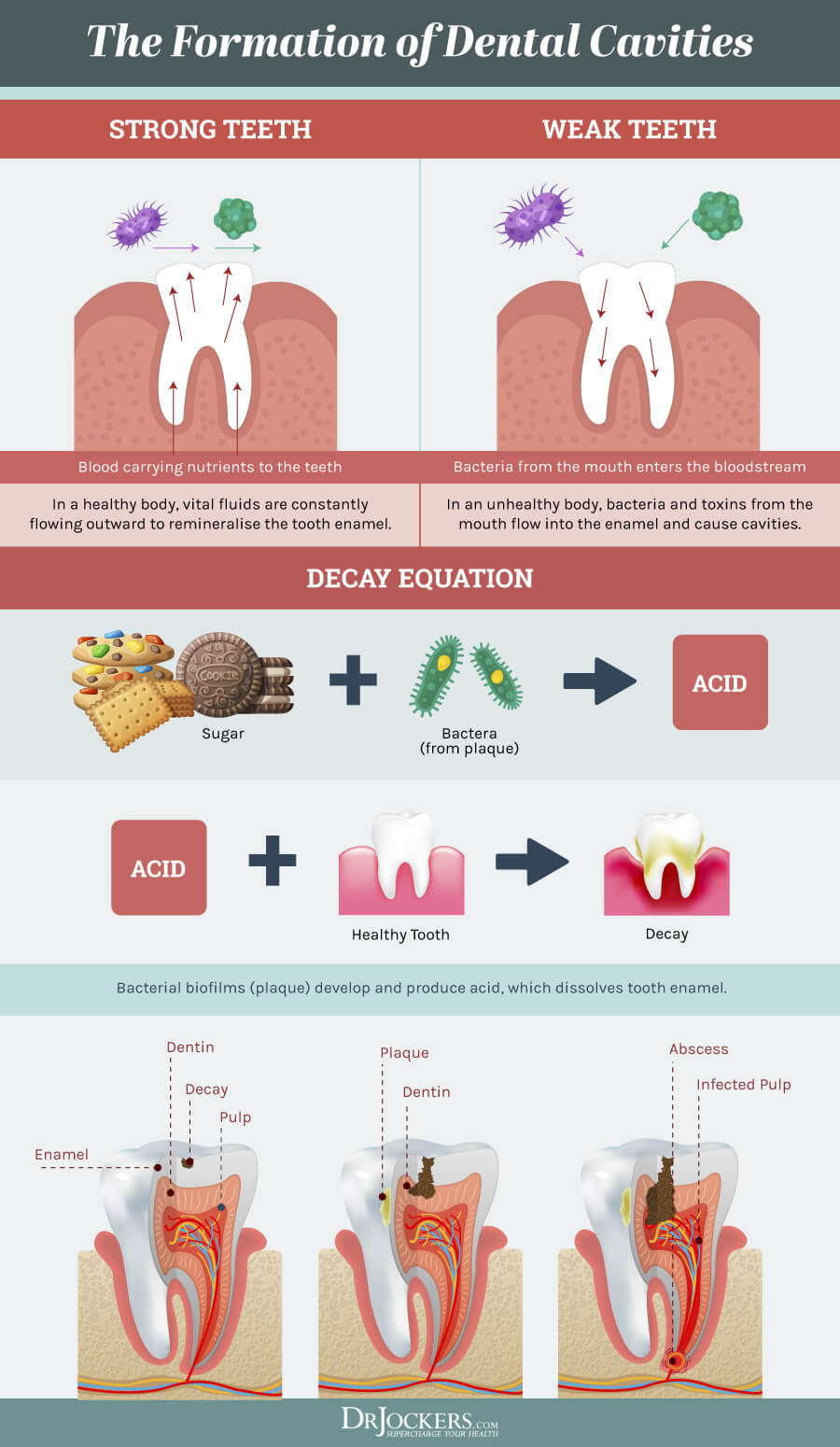
Oral Health and its Many Influences
Researchers in the past used to question what makes someone more or less at risk to poor oral health. Aside from maintaining good oral care from brushing, flossing and using a mouth rinse, many other variables contribute to healthy teeth including structure, blood flow, nutrient absorption and diet.
Without all of these key contributing factors working in harmony to maintain health, bacterial infection in the mouth causes tooth decay and may be one of your first signs of whole body health (1).
Dental caries is one of the most common infectious bacterial diseases and is largely dictated by our lifestyle habits today. From before birth, the developing tooth structure is dependent on nutrients being consumed from the mother. During infancy, the milk from nursing mothers is either rich in key nutrients from her diet or lacking vitamins and minerals needed for teeth development.
As a child, processed foods and easy go to grains can make up the majority of any one meal. As we age, our desire to sip coffee and wine can lead to tooth erosion and our hurried lifestyles impact our attention to receive adequate whole nutrients throughout the day.
Noting these factors which contribute to our oral hygiene is of primary importance in avoiding these very problems. The infection of a cavity occurs in a small window of time when our teeth are not provided with the necessary tools they require preventing infection. Here are some strategies to support a healthy mouth and teeth.
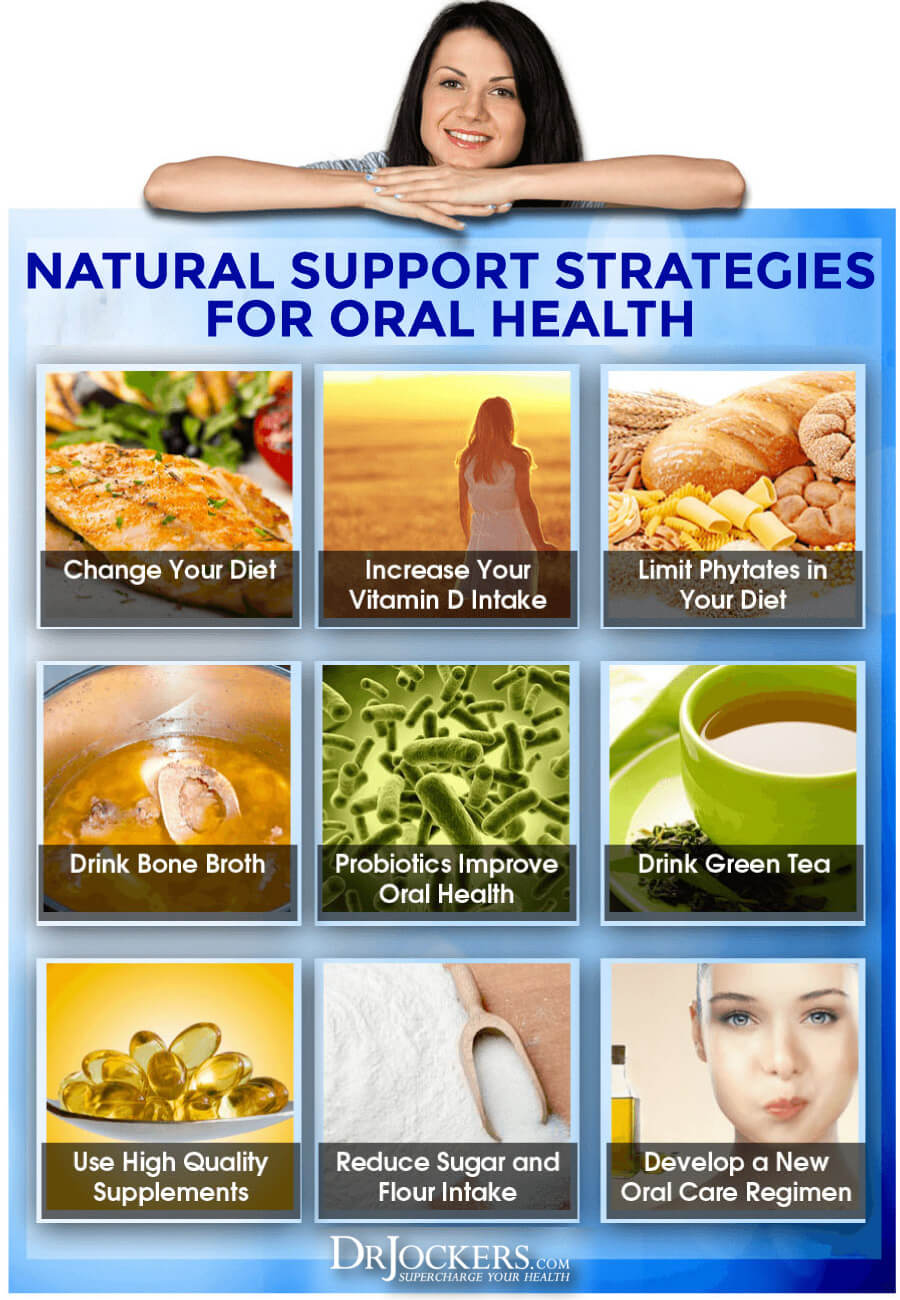
Change Your Diet
The majority of issues causing cavity production and tooth decay pinpoint back to diet. Previously mentioned, our diets affect the health of our teeth from before we are born.
Healthy tooth structure is required to reduce risk of damage and is dependent on the nutrients we consume. Is food currently healing your oral health care problems or causing harm? In the article here, I go over the key nutrients you need
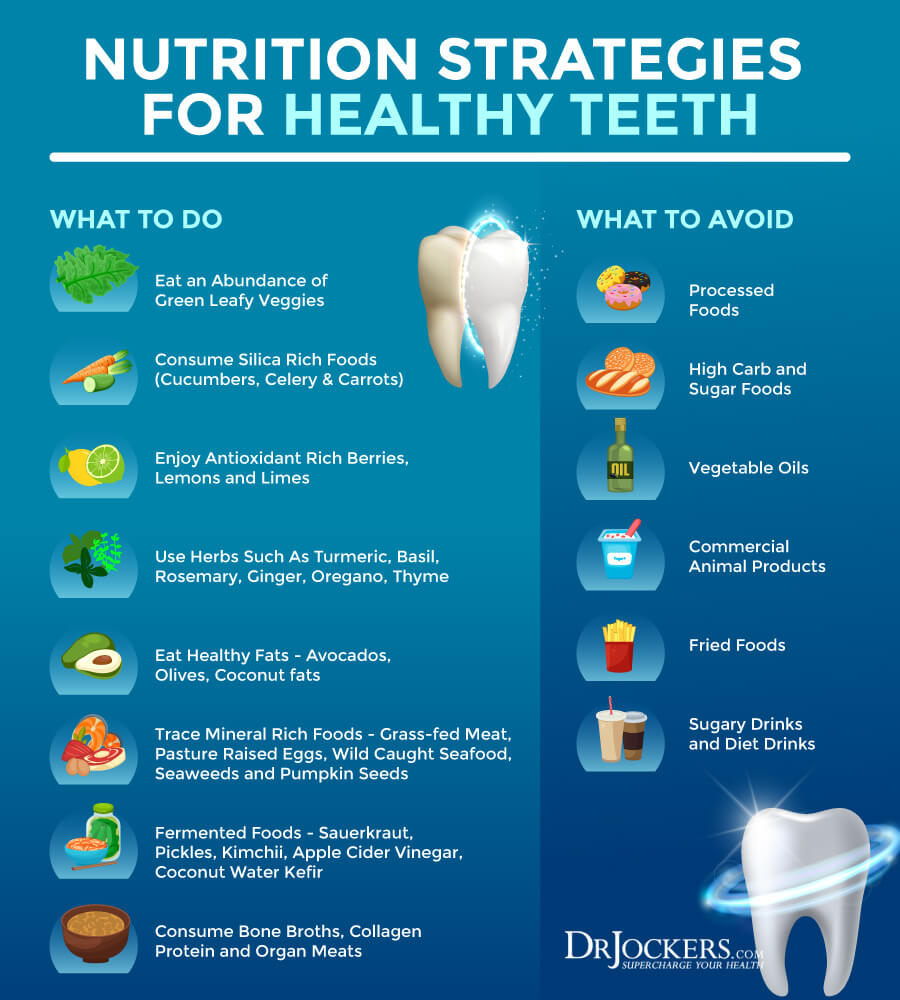
Increase Your Vitamin D Intake
Vitamin D is essential in our diet to improve tooth resistance to bacteria. So powerful at preventing disease, the Medical Research Council was instructed by the Dental Disease Committee to investigate the effects of vitamin D on dental care. Clinical trials have since shown that a diet high in vitamin D can suppress the spread of active dental caries. (2)
Studies of different groups including diabetic and non-diabetic children investigated the effect of a diet rich in vitamin D on cavity development (2). Participants were fed a well-balanced diet high in vitamin D containing foods such as cod-liver oil, eggs, milk and butter. Results significantly showed that the diet was effective at healing tooth decay and halting the progress of cavities.

Limit Phytates in Your Diet
Typical diets in today’s fast paced world are abundant in whole wheat found in breads, cereal, and pre-prepared foods. These foods contain a compound phytate, or phytic acid.
Phytic acid is referred to as an anti-nutrient because of its ability to bind with and block the absorption of critical minerals like calcium, zinc and magnesium. As a result phytates contribute to nutrient deficiency, digestive complications and is associated with tooth decay. (3)
Phytic acid is tightly bound in the form of phytate in foods predominantly including beans, nuts, seeds, grains. A diet high in phytates leads to risk of dental caries development because it interferes with the body’s ability to absorb essential nutrients for healthy teeth maintenance such as vitamin D and calcium.
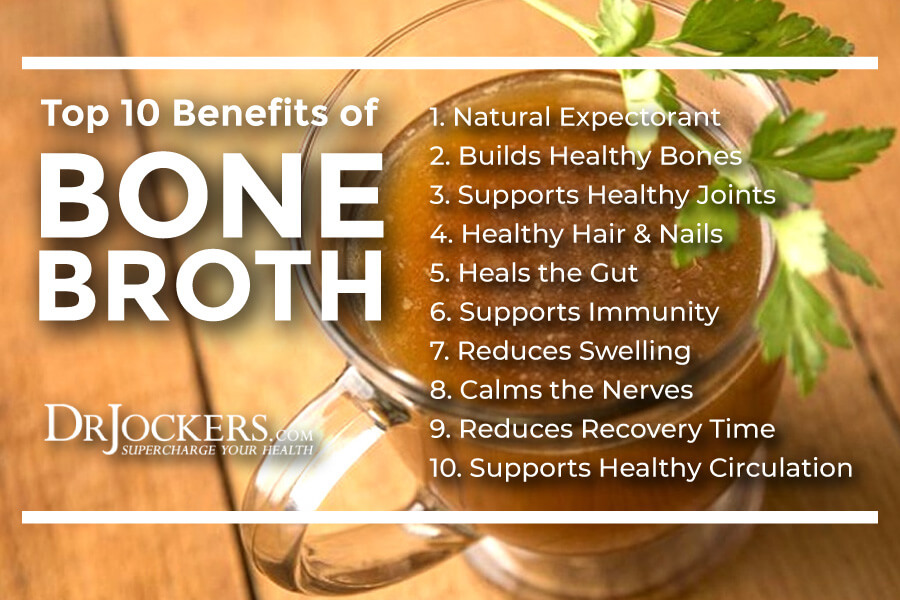
Drink Bone Broth
Sipping on soup can do more than help you heal from the common cold. Bone broth is rich in nutrients for supporting oral health. Calcium, magnesium, and phosphorus are extracted from the bone and are easily absorbed into the gastrointestinal tract. Perhaps one of the most important components of bone broth is gelatin.
Gelatin dense soups such as bone broth contain an abundance of the amino acid glycine and boost the body’s ability to break down and use proteins and nutrients in foods(7). The overall affect improves immunity and helps combat infectious agents that cause cavities and other oral health diseases.
Consider creating bone broth in large batches and using it as a base for stews, gravy and it to simmering vegetables or preparing rice. Cafes now even offer bone broth as an alternative to coffee for a morning pick me up. You can also get a great premade bone broth. My favorite brand is Kettle & Fire (here) which is organic and slow simmered to extract the most nutrients from the bones.
You can also use purchase a bone broth collagen protein that you can use in smoothies and shakes to get more of these key nutrients.

Probiotics Improve Oral Health
Foods with probiotics can improve oral health and reduce further damage to your teeth by suppressing the growth of harmful bacteria (9). Bad bacteria associated with infection seek shelter in the small areas between and within teeth. Consuming probiotics helps to offset the acidic pH which supports these harmful bacteria.
Some probiotic rich foods are coconut water kefir, kombucha, pickles and fermented foods like sauerkraut. These foods stimulate the production of healthy bacteria in the mouth needed to prevent plaque buildup and dental decay (9).
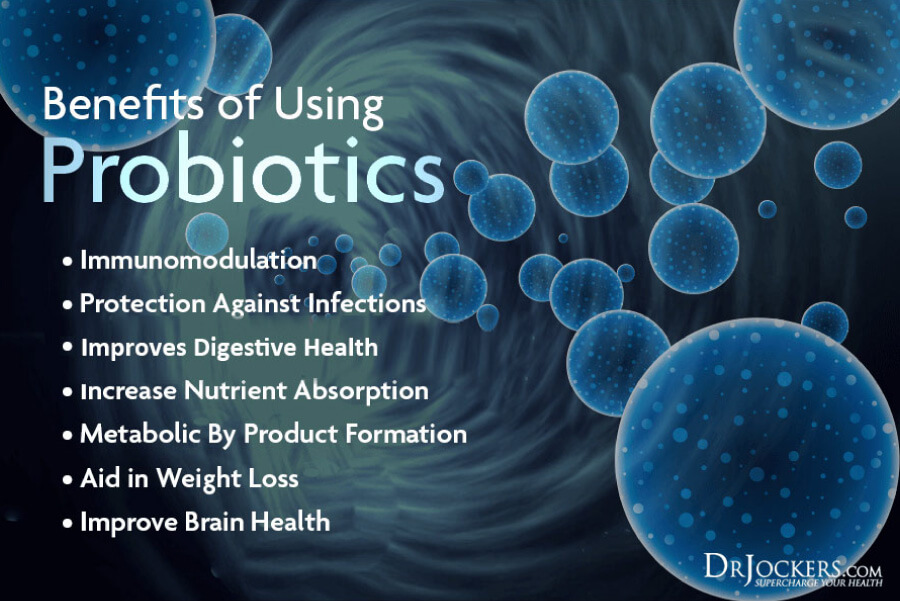
Drink Green Tea:
One major culprit of creating pH imbalance in the mouth which Americans face today involves the daily routine of sipping on coffee. You may be more worried about coffee staining your teeth than you are that coffee creates pH imbalance.
Citrus fruits and sugars are not only to blame for this occurrence. Unlike coffee, green tea is a great caffeine alternative and does not typically require added flavoring or sweeteners.
Green tea contains a polyphenol known as catechins which acts as a powerful antioxidant. Green tea provides anti-inflammatory responses in warding off harmful bacteria and improves oral health.
Although you can purchase low-acid coffee, daily coffee consumption creates favorable environments for harboring infectious oral bacteria and eats away at tooth structure.
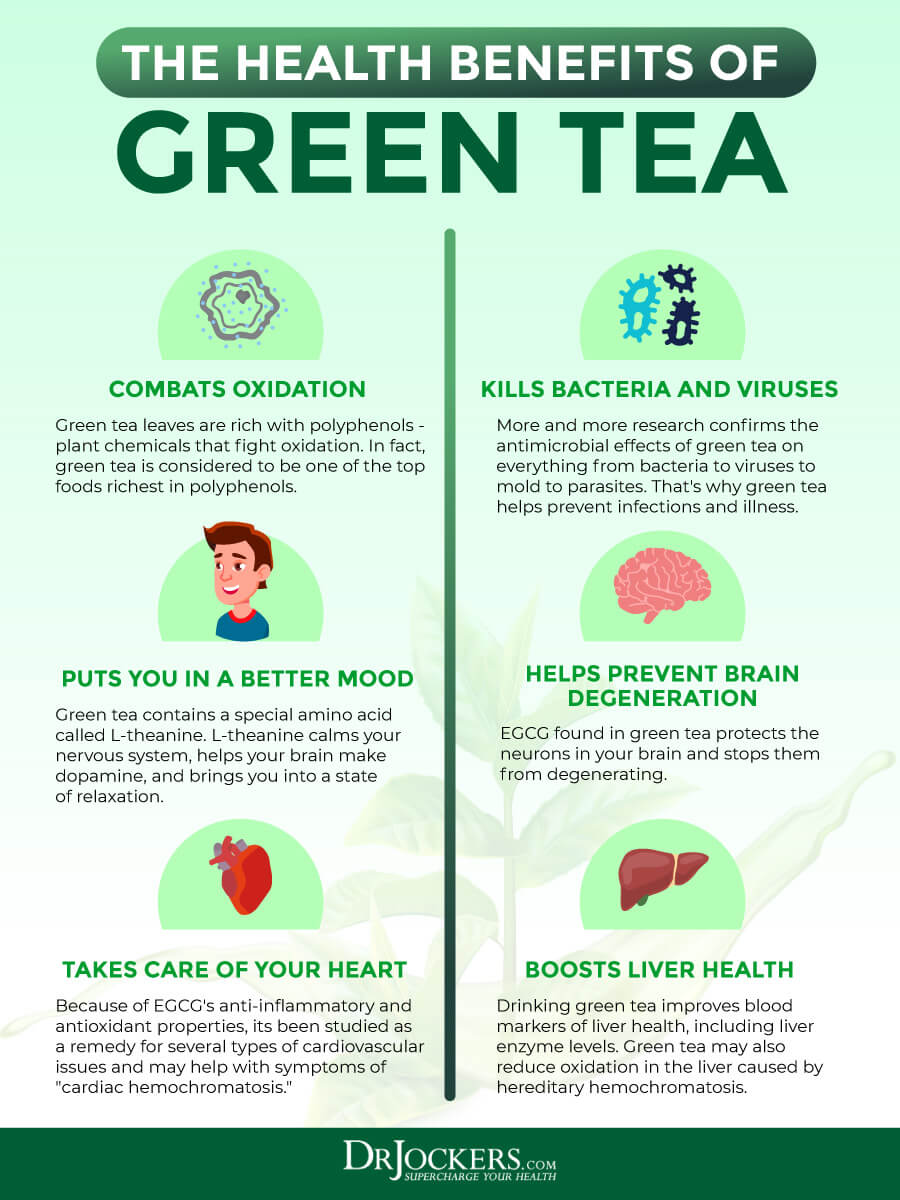
Use High Quality Supplements
We need to support the key micronutrients that are essential to bone health and keeping inflammation under control in order to prevent or reverse cavities. This because even more important during pregnancy and when lactating, when women require additional vitamins and minerals for a child’s growth and proper tooth structure calcification.
Individuals with lactose intolerances may also be deficient in vitamin D and calcium rich in grass-fed dairy foods. Consider the following supplements to increase absorption and availability of nutrients to teeth: (2)
- Vitamin D: Promotes strong teeth and healthy oral wellness
- High Quality Fish Oil: For anti-inflammatory omega 3 fatty acids
- Magnesium: Improves the availability of calcium to be absorbed into the bloodstream and available to teeth
- Probiotics: Improve the balance of bacteria in the mouth
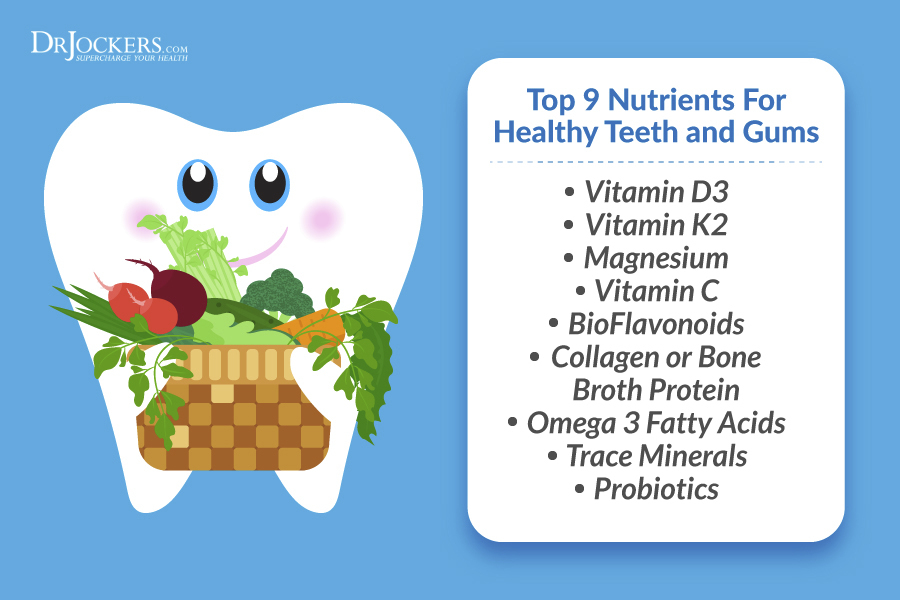
Reduce Sugar and Flour Intake
Processed foods, particularly sugar and white flour, should be avoided because they are well known culprits contributing to plaque buildup and cavities (6). Individuals in cultures without access to oral care products have been found to be generally free of tooth decay and systemic diseases.
It is apparent that our main focus on cleaning practices to promote oral care rather than total health care is a major problem to overcome in the fight to treat infection and prevent oral health deterioration. (6)
Unlike processed white flour, coconut flour contains bacteria killing properties to treat against oral infections. Lauric acid and monolaurin are examples of fatty acids which focus on disabling viruses. Coconut flour has been used to create coconut soap in clinical testing as a substitution for chemical disinfecting agents (5).

Develop a New Oral Care Regimen
A traditional Ayurveda therapy long used as a mouth rinse is the practice of oil pulling. Oiling pulling involves swishing an oil such as sesame or sunflower oil in the mouth to reduce plaque buildup. Coconut oil today is readily available and is composed of medium chain fatty acids.
The majority of these fatty acids are lauric acid proven to have both microbial fighting and anti-inflammatory properties. Oil pulling has been shown to reduce plaque and gingivitis in one month’s time (4).
Dental plaque creates structural changes to a tooth’s surface and is made up of bacteria. Oil pulling is hypothesized to create soap like cleansing effect on teeth as well as a moisturizer with antiseptic capabilities with no side effects. Unlike commercial mouthwashes containing compounds which stain teeth and cause taste changes, coconut oil is not reported to stain or alter taste sensation.
Coconut oil also contains a fatty acid called monolaurin which is produced in the body following lauric acid absorption (5). The monolaurin content of coconut oil contributes to antimicrobial activity in the fight to ward off infectious agent.
Coconut oil can be used in many of dozens of recipes readily available on the internet. Consider using a recipe that combines coconut oil, coconut flour, aluminum free baking soda and clove oil for optimal effects. You can create different varieties using different essential oils for various sensations.
If you rather purchase your oral care products, Dr. Bronner’s offers toothpaste that is fluoride free with no added foaming agents (8). I use the peppermint flavor here because peppermint has great anti-microbial and breath freshening properties.
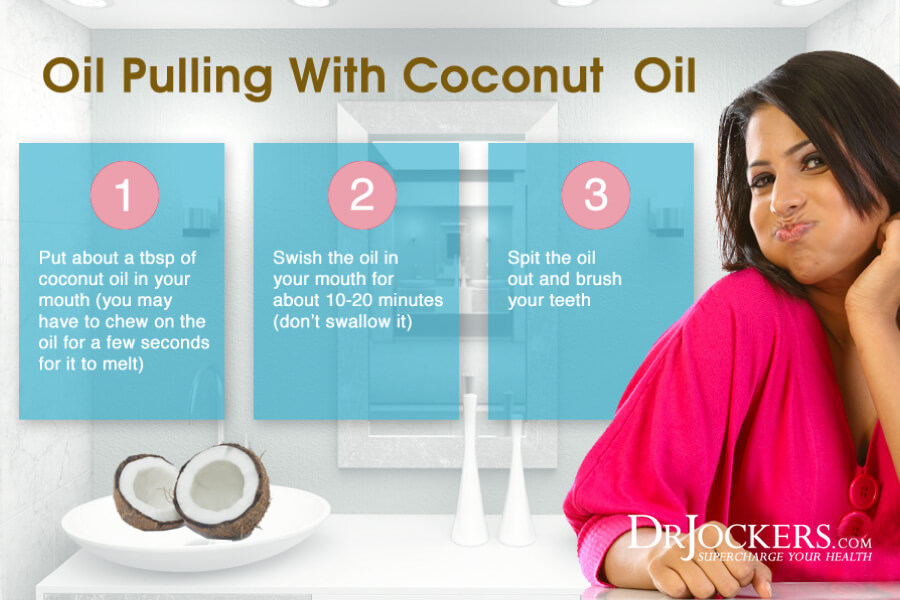
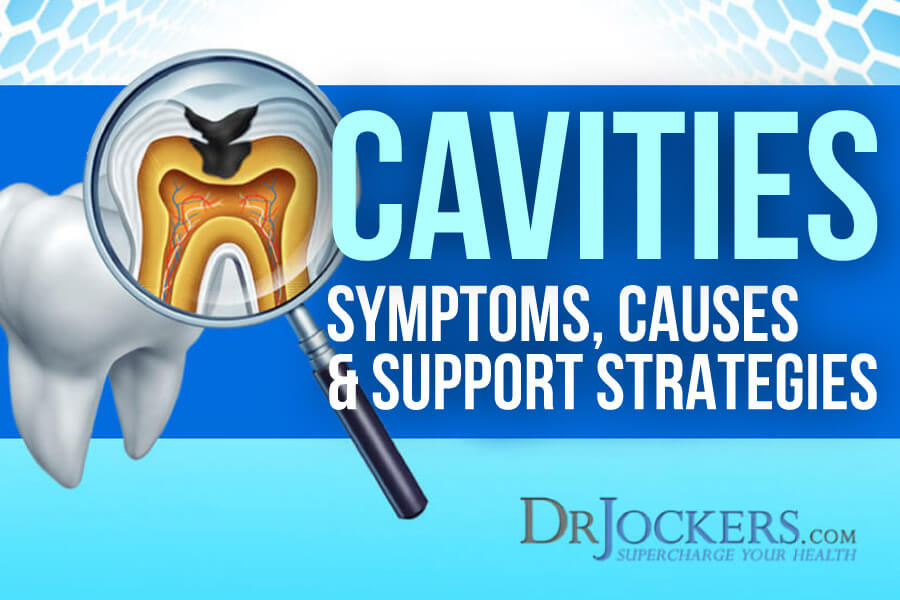



Dr Jocker , the above article is excellent. I am doing tooth pulling for several years. Recently one of my molders was infected, I treated it with Essential oils (glove and more). The infection is gone but my tooth is loose. The dentist wants to pull it, but I hope the tooth will firm up. I had the same on the other tooth and it is all right.
My routine is: tooth pulling, and after each eating I rinse with 3% peroxide and alternate with rinsing with salt water (the good salt). I also take antibiotics several vitamins. What else can I do to avoid losing this tooth. Your input is appreciated. Thank you Luise Schmid
in case you want to email me
Tooth-related problems are always achy to deal with, but cavities are definitely the worst. Best tips on how to get rid of cavities. Thanks 🙂
Absolutely Dr. Garg!
Hello.
My 2 upper right side tooth’s having cavity, anything i eat it stuck in cavity, so please suggest me a method to cure this problem. Can i go to dentist or tell me a natural method to cure this..
Abhijeet, you can try following the strategies in this article and see if that helps but you may want to look for a biological dentist in your area. https://iaomt.org/for-patients/search/
Hi.
I have a lot of cavities but they’ve been drilled and has filling. Is there anyway to heal the cavities? I try reading the article but I don’t get it.
Thx
I have cavity in my last tooth and having severe pain but whenever i do oil pulling my all pain is used to go away… So my question is shall i continue this oil pulling?? For healing this cavity or i should go to dentist to treat cavity….i just want to know that will oil pulling will heal the cavity???? Please reply..
Thank you Dr. Jockers, this is an awesome topic and your information is quite informative. My family and I love Dr. Bronners peppermint toothpaste and oil pulling, thanks to you years back! Do you have a recipe for making our own with coconut oil and coconut flour? I do make a dry powder but hadn’t heard of trying it with coconut flour. Any idea the ratios? Thanks again for always such helpful and educational info!
Thanks Amanda, no I haven’t tried making my own toothepaste. Blessings!
Thanks for responding Dr. Jockers. And I made some right after reading your article and added one capsule of activated charcoal. Fun!